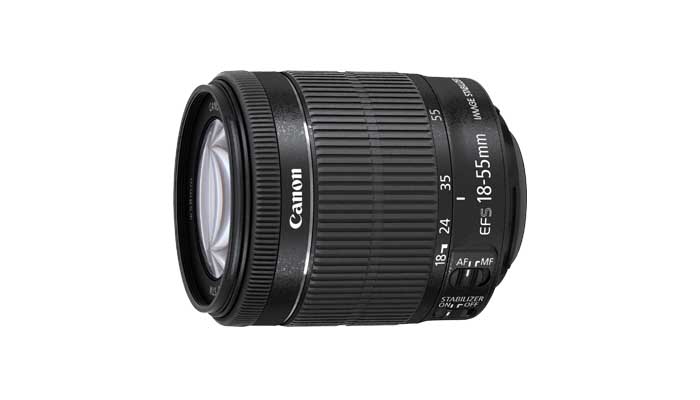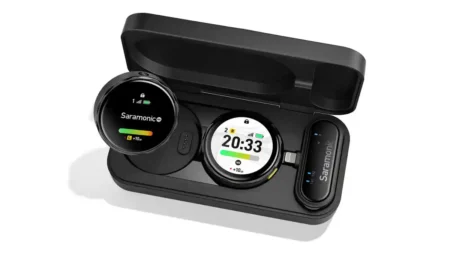There’s no denying the image quality produced by full-frame lenses, but when to use APS-C lenses instead of full-frame?
Turn your lens around and you’ll see that lenses are designed with an imaging circle around the portion of the optic that mounts into your camera body. This image circle collaborates with your sensor, and as such lenses are designed to be used with specific sensor sizes.
A full-frame lens is roughly equivalent to a 35mm frame of film, while an APS-C sensor is a little bit smaller.
When you mount a full-frame lens on a camera with an APS-C sensor you will get what is called a crop factor. This means your camera’s APS-C-size sensor magnifies the scene to produce an image that will match the lens’s full-frame image circle.
The effect is that a 50mm full frame lens mounted on an APS-C body with a 1.5x crop factor will capture a field-of-view that is the same as a 75mm on a full frame body.
For Canon, this crop factor is 1.6x. For Nikon, Sony, Pentax, it’s 1.5x. For Micro Four Thirds, it’s 2x.
- Find the latest deals on Canon APS-C lenses at Amazon UK and Amazon US
- Find the latest deals on Nikon APS-C lenses at Amazon UK and Amazon US
- Find the latest deals on Sony APS-C lenses at Amazon UK and Amazon US
So as you’ve probably figured out, if you have a full-frame lens with an image circle bigger than your camera’s sensor, your camera will only record an image from the middle of that imaging circle. This means you are capturing less of your scene when you mount a full-frame lens on an APS-C-sensor camera.
For portraiture this isn’t an issue, but if you are shooting sport or wildlife or landscape photography, even, you sometimes want to capture as much of the scene as possible.
So the main benefit of using APS-C lenses and third-party equivalents instead of full-frame is that these ‘crop’ lenses offer wider coverage for those times when you need to capture as much of the scene as possible.
Another thing to consider is that you can sometimes get more flare in your images when using a full-frame lens on an APS-C camera body. This is because an APS-C lens has a narrower field of view, so if you’re shooting close to the sun the light has no physical path through the lens.
This really only happens though when you’re shooting in very bright conditions or right next to a main light source.
A word of warning: as reader Rob Bridden rightly pointed out on Facebook, attaching Canon EF-S lenses to full-frame cameras can cause damage to the mirror mechanism of your camera. This is due to the extra long baffle on the mount. This can be an expensive repair job, so it’s best avoided with EF-S lenses.
Which full-frame cameras allow APS-C lenses?
Nikon and Sony both allow their full-frame and APS-C lenses to be used interchangeably with their full-frame and APS-C format cameras. This means you can mount your Sony or Nikon crop lenses onto Sony or Nikon full-frame bodies.
The cameras then offer a ‘crop’ mode you can enable when using APS-C lenses. This will effectively tell the camera not to use the data from the entire full-frame sensor, but rather extract an APS-C-size crop from it. This provides the effect of shooting with a longer lens.
Canon EF and EF-S mounts are different. Crop lenses sit deeper into the body in Canon’s APS-C DSLRs. Mounting these EF-S lenses on full-frame Canon DSLRs could cause internal damage to your camera, as the bayonet could bump against internal elements.
By making the two mounts different, Canon prevents EF-S lenses from being mounted on a full-frame camera. It’s also worth noting that Canon’s M-series lenses for its APS-C mirrorless cameras cannot mount onto its full-frame EF or R mounts.

Why use Sony and Nikon crop mode?
Being able to turn crop mode on and off for different focal length effects means fewer lenses you have to lug around. Of course, you are sacrificing some image quality by using fewer pixels. But if you are a wedding photographer, for instance, the trade-off in resolution could be handy, as you’re less likely to miss key moments by changing lenses.
APS-C lens prices vs full-frame
The other big reason you might choose an APS-C lens over a full-frame optic, of course, is that APS-C lenses are much cheaper to manufacture, which means you can purchase them for much less money.
Let’s look at Nikon as an example. Nikon’s standard APS lens, the18-55 F3.5-5.6G AF-P VR, this gives photographers an effective focal length equivalent to 27-83mm on a camera such as the Nikon D5300
This standard lens will cost you around £70 on its own and is often much cheaper when purchased in a kit with the camera body.
Nikon can sell this lens for so much less than its higher-end, full-frame lenses because it is significantly smaller, lighter and easier to manufacture. It has fewer costly components, meaning Nikon can churn them out quickly with fewer costs to pass on to the consumer.
Nikon’s full-frame FX 16-35mm, on the other hand, offers a similar focal length to its APS-C standard lens, but this FX wide-angle zoom will cost you upwards of £1000.
That’s because it’s much bigger, heavier, has a more complex interior design and costs more money and takes longer to produce.
Reasons for using full-frame lenses over APS-C
I’m going to be commenting just from the perspective of crop factor here. Obviously you would use a full-frame lens over an APS-C lens for image quality reasons.
But for those times when you want the wider coverage, there are some counterpoints to consider for mounting that full-frame lens on your APS-C body.
For starters, once you start shooting at focal lengths of 24mm or more, the advantages of making lenses with small image circles for reduced sensor sizes are less pronounced.
You’ll also find less vignetting in your images when using a full-frame lens on an APS-C body.
Full-frame lenses also allow you to use teleconverters (though sadly not with Canon EF-S lenses, as these can cause damage).




The apsc crop has nothing to do with the lense. The crop comes from the sensor size. So no matter what lense you mount on an apsc sensored camera, be it a lense designed for full frame or apsc, you will have to deal with the crop factor on the smaller sensor.